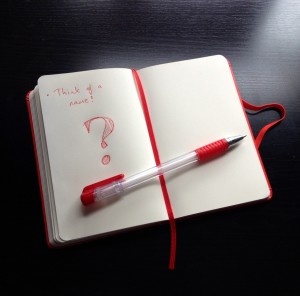By Cathy Tingle
When you’re editing, there are tasks for which you need your highest level of expertise – reading for sense, reviewing and amending grammar and punctuation, setting overall style – and tasks that require a different level of editing, such as checking, comparing, coding and formatting references.

Photo by Abi Schreider on Unsplash
Most editors work at both levels, and sometimes it is helpful to do tasks that are a bit less demanding, that we can tackle in the evening or when we’re listening to our Fleetwood Mac’s Greatest Hits album (although I suspect that may just be me).
I usually delegate this second set of tasks (apart from listening to Fleetwood Mac – she’s more of a George Ezra girl) to Helen, my editorial assistant. It’s difficult to remember quite when the lightbulb moment of ‘someone else could do these reference checks!’ struck me in my early freelance days, but it sprang from a combination of having a mountain of manuscripts to get through (having not yet realised that I could say ‘no’ to clients), the understanding that some publishers had technical editors or pre-editors, and the discovery that the CIEP had a system whereby surplus work could be delegated to Intermediate Members.
I was already friends with Helen because our kids went to the same nursery. I knew she had an English degree, that she was a voracious reader, and that she was incredibly organised. So I wrote some guidelines and gave her a project. From Helen’s point of view as a mum to young children she was after flexible work, but not too much of it; interesting work, but nothing overwhelmingly taxing. She set herself up as self-employed, which meant she could also take on work from other clients.
That was three years ago. This year we have received two author acknowledgements as a team, and a beautiful mug each from a satisfied client. Over the years we have identified the tasks that Helen is happiest doing: checking references and cross-references, internet fact checks, weblink checks, and so on. She is a wizard with cross-checking case titles in law books, something that, frankly, would make my head fall off. My editing mind feels less cluttered, knowing that basic checks are taken care of, although of course I double-check anything that sounds alarm bells as I go through the text. As well as reading the entire manuscript for sense and for correct English, I set style and perform any related checks and changes, and I always format references, citations and footnotes. This means that I do enough work on the technical stuff that I’m completely familiar with all the elements of the text.
It might seem a bit belt and braces. It probably is. And of course it does mean losing some of my income – on average Helen will get around a third of my project fees. But being part of a two-person team works for me, because:
- We can discuss things. It helps oil the wheels of a project to be able to talk about it, whether it’s the author’s referencing style or an interesting fact found in the work, or even a great word – in May, Helen encountered ‘boondoggling’ (spending time on wasteful or fraudulent projects), which caused us both a level of delight that I wouldn’t have experienced ploughing through a manuscript on my own.
- We do at least one more pass than I would do alone. Helen will probably do two passes through a script; I do two to three. I feel that the work is more watertight this way. We recently got a comment from an author of a third edition: ‘I was very pleased with the work done by the language editor. Not just on a language basis, but also the fact checking. They even managed to catch quite a number of mistakes in the original text of the second edition!’
- I get through more projects. Without the technical stuff dragging me down I complete projects at a faster rate – I probably take on at least a third more work, which is Helen’s fee covered, right there.
- I think about Helen’s progress, which helps mine. Having to write guidelines, explain rules and share stylesheets helps my own progression as an editor. I encouraged Helen to do a copy-editing course early on, and she feels she has picked up a fair bit over the years, too: ‘I have learnt a lot about a process I realise I knew very little about.’
- There’s someone to have my Christmas party with. It seems trivial, but having a colleague means having company – a catch-up coffee together every so often, and of course a Christmas do. Last year we had a scone at M&S Simply Food, this year we’re off for brunch in a café that does great vegan food. It’s not fancy, but it does warm the cockles.
This won’t last for ever. I’m prepared for the fact that I may lose Helen at any time. She may get a part-time job as her children grow, or she might decide to do more work for other clients. That’s fine and really to be encouraged. Being an editorial assistant should be a first step only – but for Helen and for me, it has been a massive help and comfort at this particularly busy time of our lives.
 Cathy Tingle, an Advanced Professional Member, came to freelance copy-editing after a PhD, a decade in marketing communications and four years as editor of a popular Edinburgh parents’ guidebook. Her business, DocEditor, specialises in non-fiction, especially academic, copy-editing.
Cathy Tingle, an Advanced Professional Member, came to freelance copy-editing after a PhD, a decade in marketing communications and four years as editor of a popular Edinburgh parents’ guidebook. Her business, DocEditor, specialises in non-fiction, especially academic, copy-editing.
Posted by Abi Saffrey, CIEP blog coordinator.
The views expressed here do not necessarily reflect those of the CIEP.



















